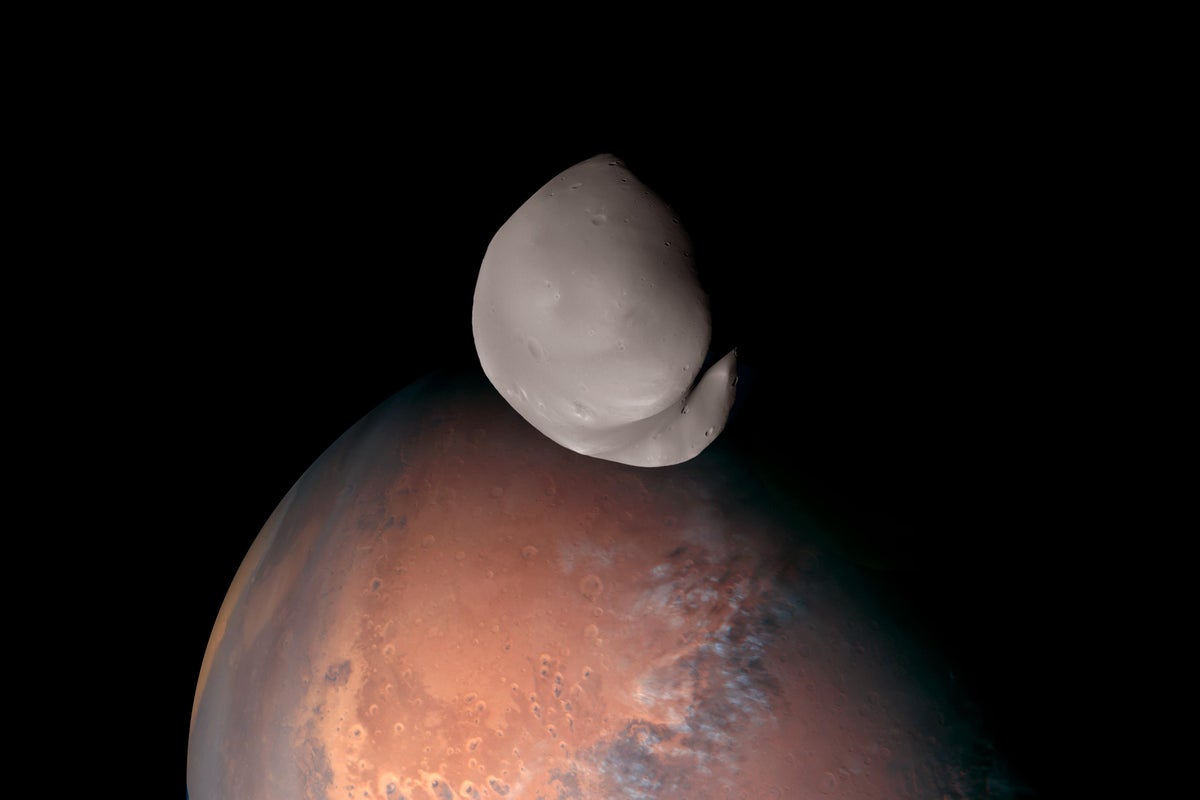
Scientists have released the most detailed images and observations of Mars’ moon, Deimos.
The images were taken by the UAE Space Agency’s Emirates Mars Mission (EMM) Hope Probe during recent flybys of the moon.
In another first, the probe flew as close as 100km to Deimos, during which it was able to record the images.
This included areas on the far side of the moon that not been possible to investigate in great detail before.
Our close observations of Deimos so far point to a planetary origin rather than reflecting the composition of a type D asteroid as has been postulated— Hessa Al Matroushi, EMM science lead
One of the pictures captures the red planet drifting into view during the probe’s closest approach.
Researchers have limited knowledge about Deimos and Phobos (Mars’ largest moon), and the new observations represent a step forward in their knowledge of Deimos, its atmosphere, composition, origins, and what this means for our understanding of Mars more broadly.
For example, researchers suggest the new observations appear to challenge the long-standing theory that Mars’ moons are captured asteroids and instead point to a planetary origin.
The findings will be presented at the European Geosciences Union (EGU) General Assembly.
As a result of the observations the Hope Probe’s activity will be extended by another year.
Hessa Al Matroushi, EMM science lead, said: “We are unsure of the origins of both Phobos and Deimos.
“One long-standing theory is that they are captured asteroids, but there are unresolved questions about their composition.
“How exactly they came to be in their current orbits is also an active area of study, and so any new information we can gain on the two moons, especially the more rarely observed Deimos, has the potential to unlock new understanding of Mars’ satellites.
“Our close observations of Deimos so far point to a planetary origin rather than reflecting the composition of a type D asteroid as has been postulated.”
We expect to build a better understanding of both Phobos and Deimos’ origins and evolution and advance our fundamental understanding of these two satellites of Mars— Justin Deighan, EMM
Hope has so far made a number of close flybys of Deimos while continuing to create planet-wide observations of Mars’ atmosphere.
Justin Deighan, EMM deputy science lead, said: “We have a unique opportunity with Hope, to characterise the composition, thermophysics, and detailed geomorphology of Deimos with these new observations.
“We expect to build a better understanding of both Phobos and Deimos’ origins and evolution and advance our fundamental understanding of these two satellites of Mars.”







